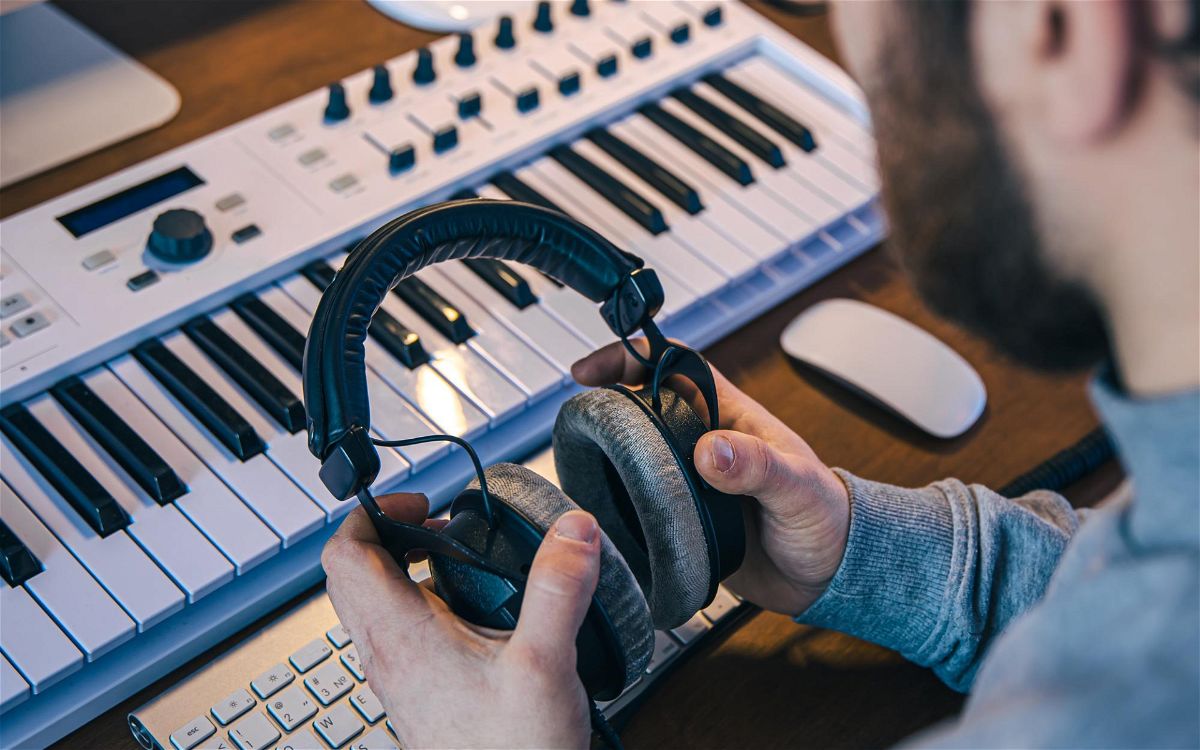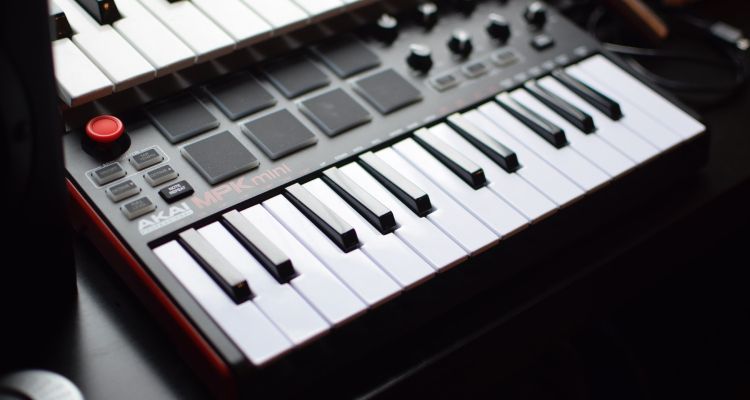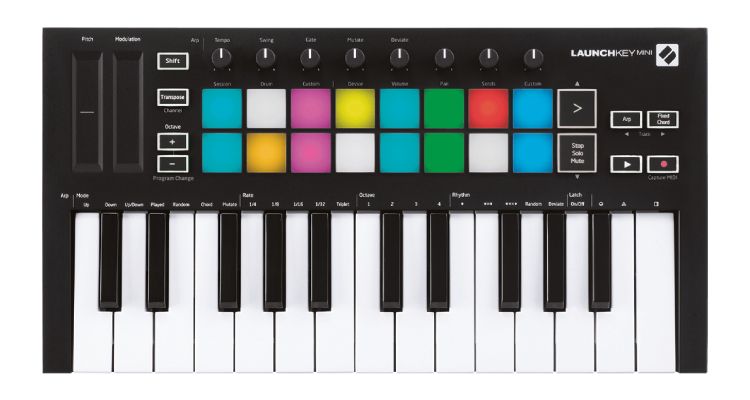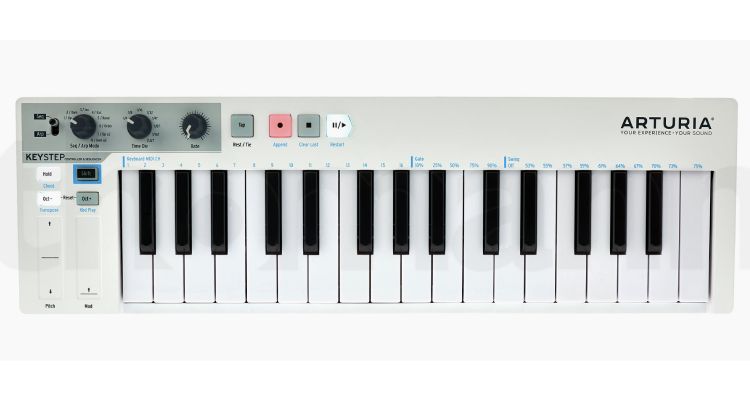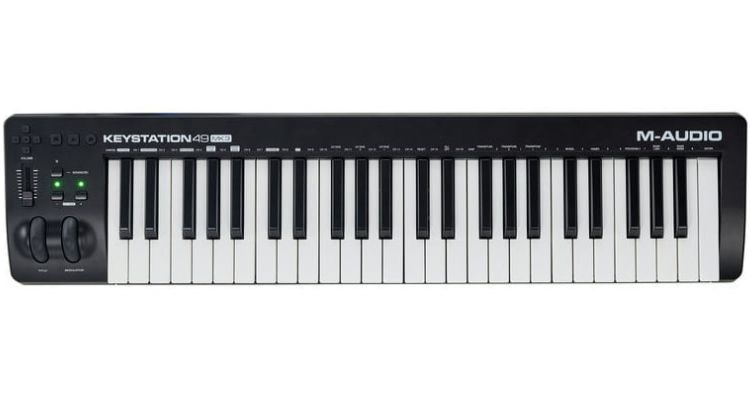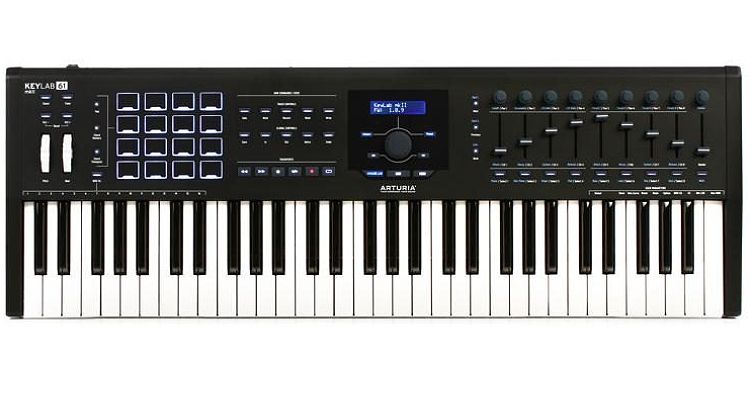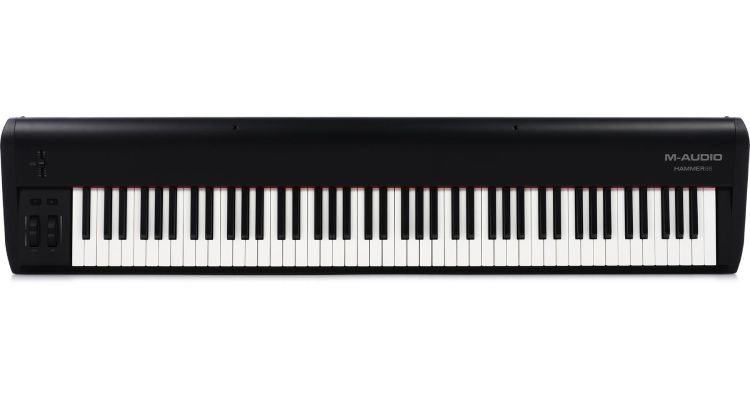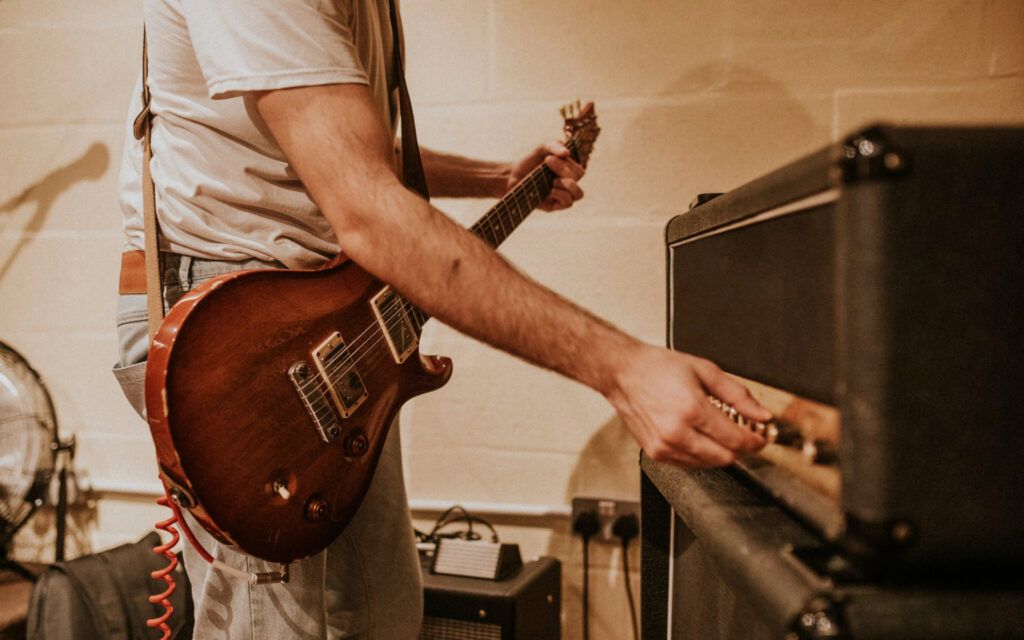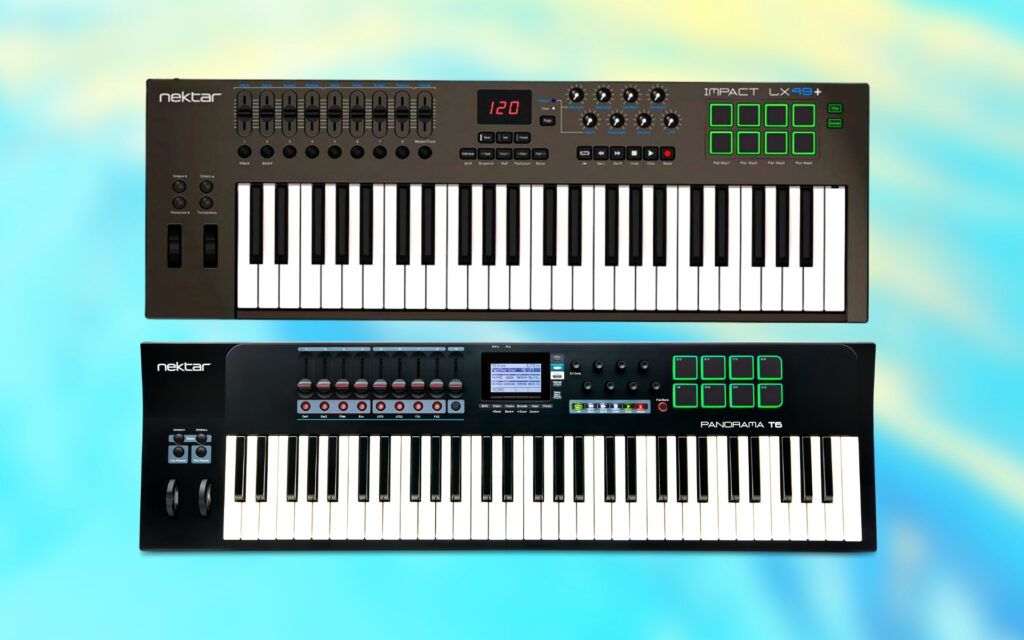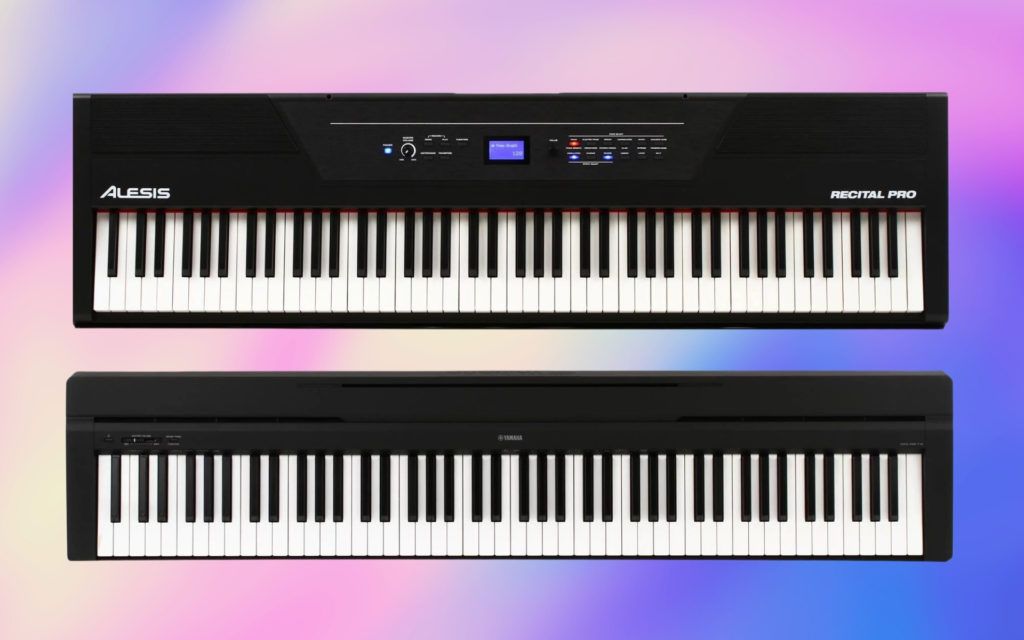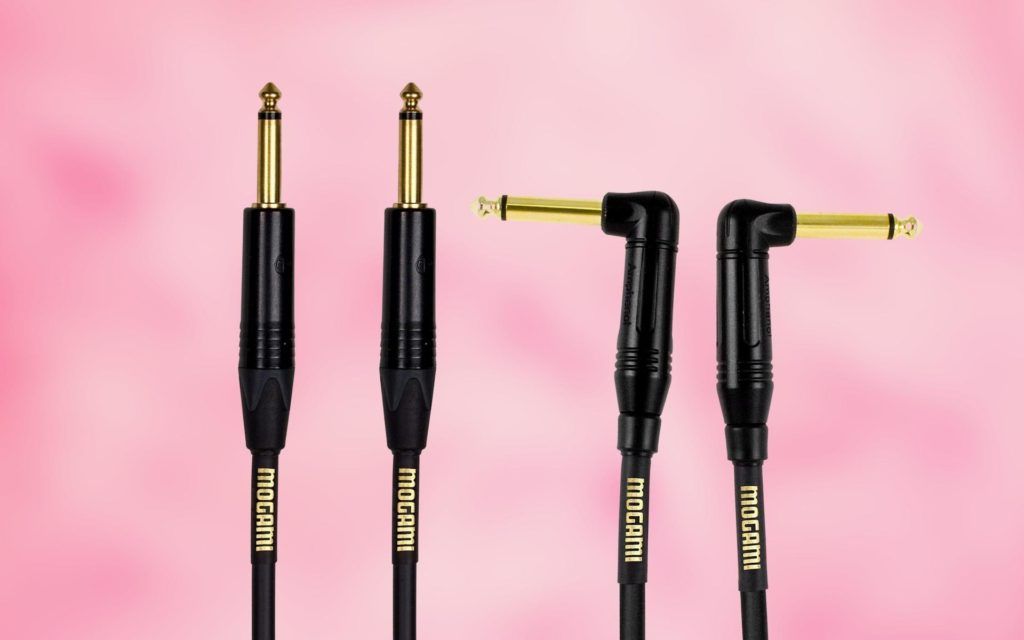In any digital recording studio, whether it is a home studio or a professional setup, certain pieces of equipment are almost guaranteed to be used. These essential devices include audio interfaces, monitors, microphones, and of course, MIDI keyboards.
The invention of the MIDI keyboard dramatically changed the way that music could be made. It allowed producers and musicians to load up any sound that they had access to, and use the keys to trigger these sounds in any rhythm they chose.
One of the key decisions you need to make when choosing a MIDI keyboard is the number of keys you require. In this guide, we’ll look at the pros and cons of both compact, and extensive MIDI keyboards, so that you can make the right choice.
How Many Keys Should I Have on a MIDI Keyboard?
If you only need to input single-note melodies or patterns into your DAW, a 25-key MIDI keyboard will suffice. However, if you want to use notes which stretch across multiple octaves, or input MIDI data with more expression, you will need 49, 61, or even 88 keys.
How Many Keys Should a MIDI Keyboard Have?
The number of keys that a MIDI keyboard has impacts the way that you create and produce music. Certain styles of music may only require the minimum number of keys, while others may benefit from having more keys to work with.
Manufacturers commonly produce MIDI keyboards in five different sizes. You can find a breakdown of the different varieties below, along with our recommendations.
25 Key MIDI Keyboards
The most compact MIDI keyboards available to musicians and producers have 25 keys. The main advantage of these devices is their portability – they can easily be put in a backpack for transportation.
If your studio space is quite small, a 25-key MIDI controller is a good option to consider. This type of device can fit onto a small desk and will afford you extra room for your other equipment.
A 25-key MIDI keyboard allows you to play over two octaves when inputting notes into your DAW. This means you can play chords in the higher registers of the keyboard, while also playing some bass notes with your left hand.
However, it doesn’t provide enough keys to play complex pieces which involve utilizing more than three octaves.
Therefore, if you mainly intend to play single-note melodies, or triads with singular bass notes, a 25-key MIDI controller will do the job. If your requirements exceed these boundaries, you’ll need a more extensive device.
Our Recommendation
Novation Launchkey Mini MK3
Our top pick is the 25 key Novation Launchkey Mini MK3. This MIDI keyboard may be small and compact, but the manufacturer has managed to cram in a range of useful features and controls.
With 16 touch-responsive performance pads, 8 control knobs, and strips that control the pitch bending and modulation effects, this keyboard is well worth the affordable price tag.
32 Key MIDI Keyboards
The next size up from 25 key devices is 32 key MIDI keyboards. While the additional seven keys may seem relatively insignificant, this allows you to play over three octaves rather than two.
Having an extra octave available means that you can play two or three bass notes with your left hand while playing chords or melodies in the higher notes with your right hand. This is particularly useful if you use a lot of piano-based VST instruments in your tracks.
32 key MIDI controllers are slightly larger than 25 key devices, but they are still partially sized and can easily be packed away and moved from one location to another. If you like to take your studio setup on the road in case you are suddenly inspired to create music, a 32-key MIDI keyboard may be the perfect option.
Our Recommendation
Arturia KeyStep 32
The Arturia KeyStep 32 is one of the best 32-key MIDI controllers in its price range. Designed for music producers of all genres, this keyboard has three rotary controls which can be assigned to different functions within your DAW.
Additionally, the keyboard also has a built-in arpeggiator mode, which is useful for electronic styles of music production. The slimline design makes it ideal for compact studio setups with limited space available.
49 Key MIDI Keyboards
49 key MIDI keyboards are the most popular for many manufacturers. They are a perfect middle ground between the smaller, more limited options, and larger extensive keyboards which take up a considerable amount of space.
With 49 keys, you can play over a total of four octaves. This makes it possible to play expressive pieces into your recording software, without being overly limited.
These keyboards are considerably larger than 32 key controllers, and you’ll need to have plenty of space available in your studio to accommodate one. They also commonly include a variety of controls, such as pitch bend wheels, modulation wheels, and sampler pads.
Our Recommendation
M-Audio Keystation 49 MK3
61 Key MIDI Keyboards
61 key MIDI keyboards are great for skilled pianists who want to use up to five octaves when inputting MIDI information into their chosen DAW.
Unlike the smaller varieties we’ve covered so far, these keyboards are likely to have semi-weighted or fully weighted keys, which gives them a realistic, piano-like feel. This gives you more control over the dynamics and velocity of the notes you play on the keys.
If you choose a 61-key MIDI keyboard, you’ll need a lot of space on your desk. Alternatively, you can get a keyboard stand which may be a more practical solution in a smaller room.
Our Recommendation
Arturia KeyLab 61 MkII
Arturia’s KeyLab 61 MkII is an exceptional 61-key MIDI keyboard. The keys are equipped with Aftertouch sensitivity, which affords you more control over the feel and dynamics of the notes you input into your recording software.
With 9 faders that can be assigned to any parameter, you’re essentially getting a MIDI keyboard and a mixer in one device.
There are also 16 touch-sensitive performance pads, which can be used for triggering samples.
88 Key MIDI Keyboards
The largest MIDI keyboards have 88 keys. This is the same number as a full-sized piano and allows you to play with the fullest expression and feel. If your music is piano-based, this is the size for you.
The obvious downside to these larger MIDI controllers is their bulky size. Most commonly, they are placed on a robust keyboard stand, as they are usually too large to fit onto a desk.
Classical composers will require an 88-key MIDI keyboard, as this will allow them to utilize the full frequency range of the virtual instruments they use in their music.
The extensive size of these keyboards means there is additional room to fit controls, knobs, and pads. These can be assigned to different parameters within your recording software to improve the efficiency of your production process.
It’s also common for MIDI keyboard manufacturers to make the 88 keys hammer weighted so that they resemble the feel of a genuine piano as realistically as possible.
Our Recommendation
M-Audio Hammer 88
The M-Audio Hammer 88 is one of the best-selling 88-key MIDI controllers on the market.
Affordable and easy to use, its biggest strength is the hammer action keys, which feel incredibly close to a real acoustic piano.
This keyboard also boasts a variety of controls, including octave and transposing buttons, a fader, and two wheels for adjusting the pitch bend and modulation effects.
How Many MIDI Controller Keys Do You Need?
After reading our guide to the various sizes of MIDI keyboards that are available, you should have a better idea of which type you need for your music production setup. Here are some additional things to consider when making your decision.
Production Style
If you’re a music producer in an electronic genre, you may not require as many keys as someone who composes classical music. This isn’t always the case, but generally, electronic producers can get by with fewer keys.
It’s important to think about the style of music you intend to create, which instruments you will be using within your DAW, and ultimately how you want the music to sound.
How Much Space Do You Have?
While this may seem like an obvious thing to consider, it’s important to measure the space you have available in your studio before deciding on a MIDI keyboard. You may need to choose a smaller model to fit onto your desk.
If you have limited space available but would like to have a large number of MIDI controller keys to use, then investing in a stand might be a good option.
Using a stand allows you to put the keyboard in a fixed position in the room, which is out of the way of your other equipment. This is a good way to avoid your studio space becoming overcrowded.
Octave Controls
Most MIDI keyboards have octave shifter controls. These are very useful on keyboards with fewer keys, as they allow you to quickly shift the octave up or down so that you can access different notes.
If space is a problem for you, it might be a good idea to look for a more compact MIDI keyboard that has an octave control so that you can still utilize the full frequency range of a MIDI instrument when recording.
Using The Sequencer
Every DAW has a sequencer, which presents the MIDI information to you after you record with your keyboard. The sequencer is commonly laid out like a full-sized piano, and learning to use it can enhance your productions.
Even if your MIDi keyboard only has 25 or 32 keys, you can edit the notes within the sequencer so you achieve the sound you’re looking for.
Summary
Hopefully, this guide has helped you to decide how many keys you need on your MIDI keyboard. Every producer or musician has different requirements, so it’s vital that you think about your circumstance and goals when making the decision.

